Today we’re sharing the best things to do in Noboribetsu Onsen in Hokkaido, Japan. From hiking the volcanic landscapes of Hell Valley, to soaking in the natural footbaths, and eating fiery hot ramen noodles, here are some ideas for your trip to Hokkaido’s favourite onsen town!
If you’re going to be travelling around Hokkaido, the northernmost of Japan’s main four islands, you need to make time to visit Noboribetsu Onsen. This is a hot spring resort town situated on the southwestern side of Hokkaido and it is home to some rather unique and quirky attractions, all somehow related to hell.
Because of the underground thermal activity in Noboribetsu Onsen, the landscape is punctuated by plumes of steam that rise from the ground, lagoons with bubbling waters, and powerful geysers that shoot water into the air.
Not only that, but across town, you’ll find statues of creatures from the underworld guarding the hot springs, a temple where you can witness Enma Daio, the ruler of hell come to life, plus there are multiple events throughout the year that bring this Japanese folklore to life.
This is a destination unlike any other so if you’re looking for unusual places to visit in Hokkaido, add this one to your list.
In this travel guide, we’re sharing the best things to do in Noboribetsu Onsen, how to get here, where to stay, what to eat, and the festivals and events you won’t want to miss!
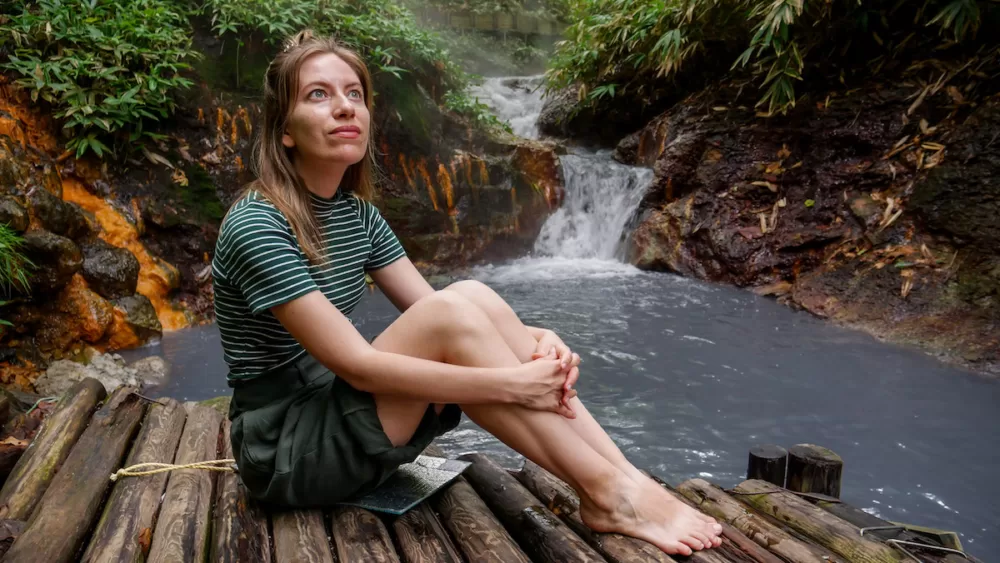
Getting to Noboribetsu Onsen
From Hakodate – at Hakodate Station, catch the Hokuto Limited Express heading towards Sapporo. It’s a 2 hour and 33 minutes train ride to Noboribetsu Station. Once you arrive in Noboribetsu, you’ll catch the local bus (schedule posted right outside the station) to Dōnan Bus Noboribetsu-Onsen Bus Terminal. From there, you can walk to your hotel, take a taxi, or take the little shuttle bus that drives people around town.
From Sapporo – at Sapporo Station, catch the Hokuto Limited Express heading towards Hakodate. It’s a 1 hour and 17 minutes train journey to Noboribetsu Station. Once you arrive at the station, you do the same as above and catch the local bus to Dōnan Bus Noboribetsu-Onsen Bus Terminal and then make your way to your hotel.
From Tokyo – at Tokyo Station, catch the Tohoku Shinkansen to Shin-Hakodate-Hokuto Station. Once you arrive at Shin-Hakodate-Hokuto Station, you’ll transfer onto the Hokuto Limited Express heading towards Sapporo. You’ll get off at Noboribetsu and take the local bus to Dōnan Bus Noboribetsu-Onsen Bus Terminal and then proceed to your hotel.
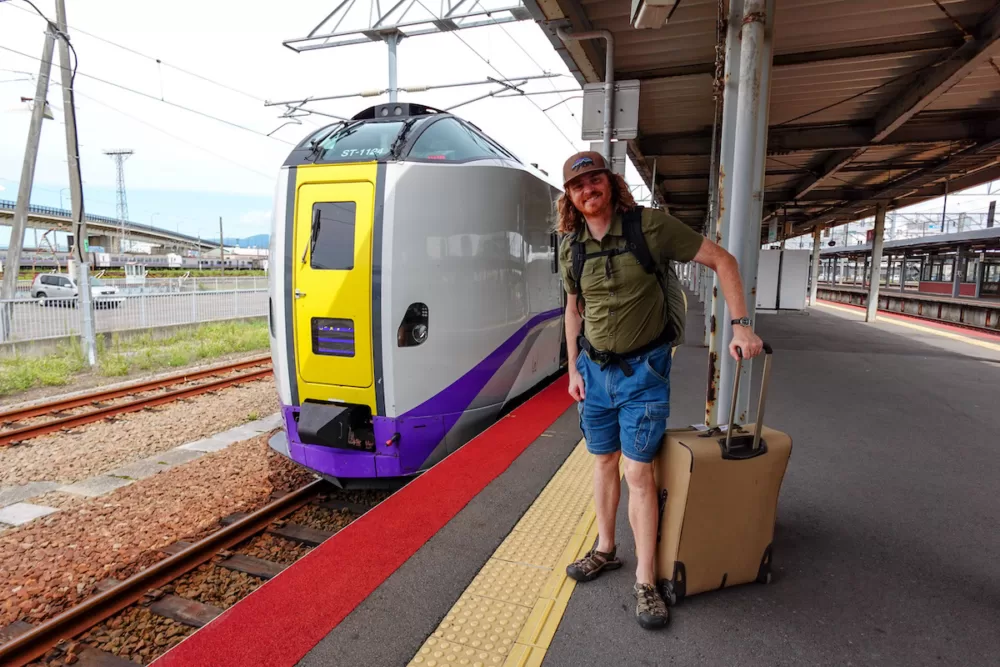
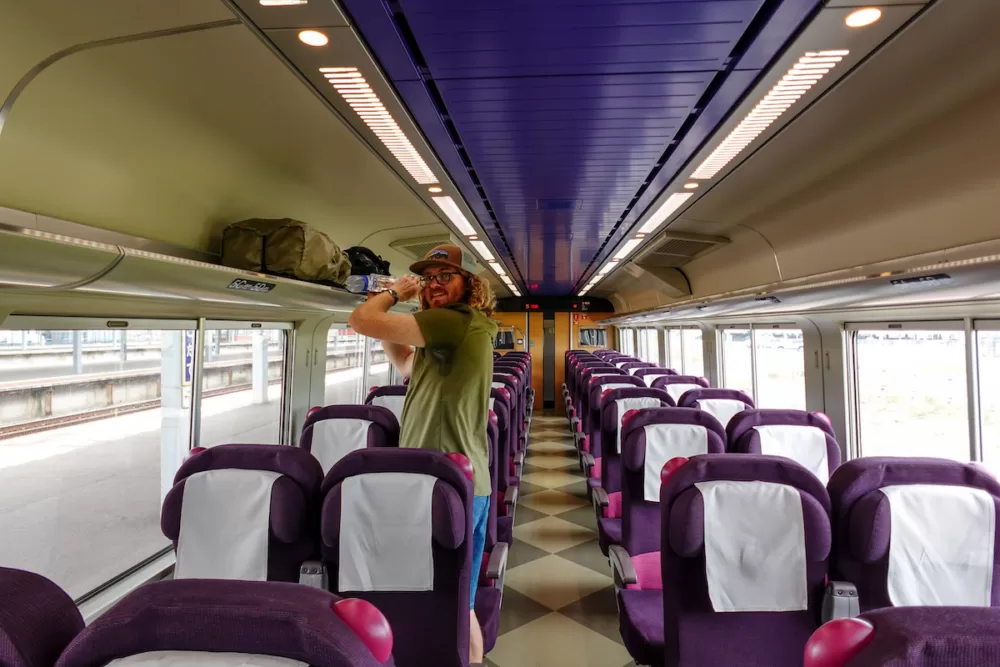
Things to do in Noboribetsu Onsen
Hot Spring Demons
One of the first things you’ll notice when arriving in Noboribetsu Onsen is the colourful demons scattered through town. They are known as ‘oni’ and are considered the guardians of the hot springs because there was a time when locals believed that only demons could survive in the volcanic Hell Valley.
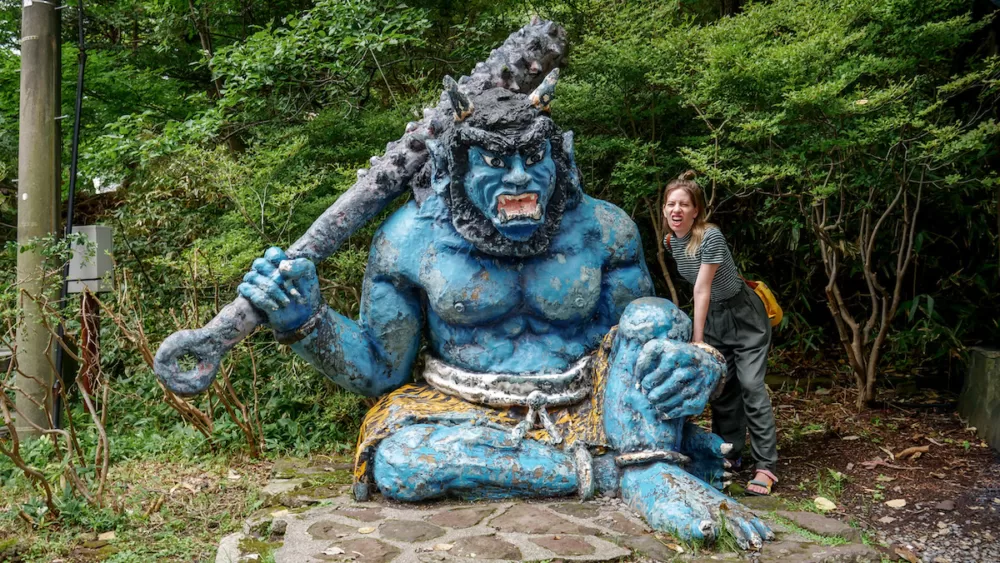
If you want to see the demons, you’ll find them outside the JR Noboribetsu Station, along the Noboribetsu-Higashi Interchange on the road that leads up to town, at the base of Yuzawa Shrine just across from the entrance to Hell Valley, and on the road that leads up to the Oyunuma Natural Footbath. These demons are red and blue in colour and carry spikey clubs.
There are some less intimidating oni around town that devotees can seek out for success in business, their studies and even romance.
Oyunuma Natural Footbath
One of the best things to do in Noboribetsu Onsen is to visit the Oyunuma River Natural Footbath situated on the north end of town.
This is where a hot spring river flows from Lake Oyunuma. The water has a greyish, milky blue colour and once you dip your feet in the river, you can also dig your toes into the black volcanic sand.
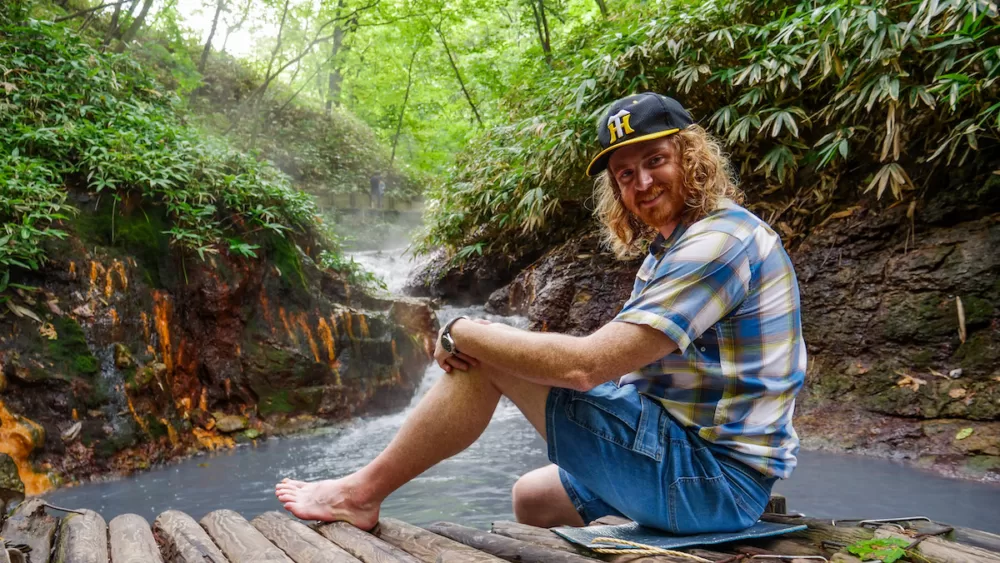
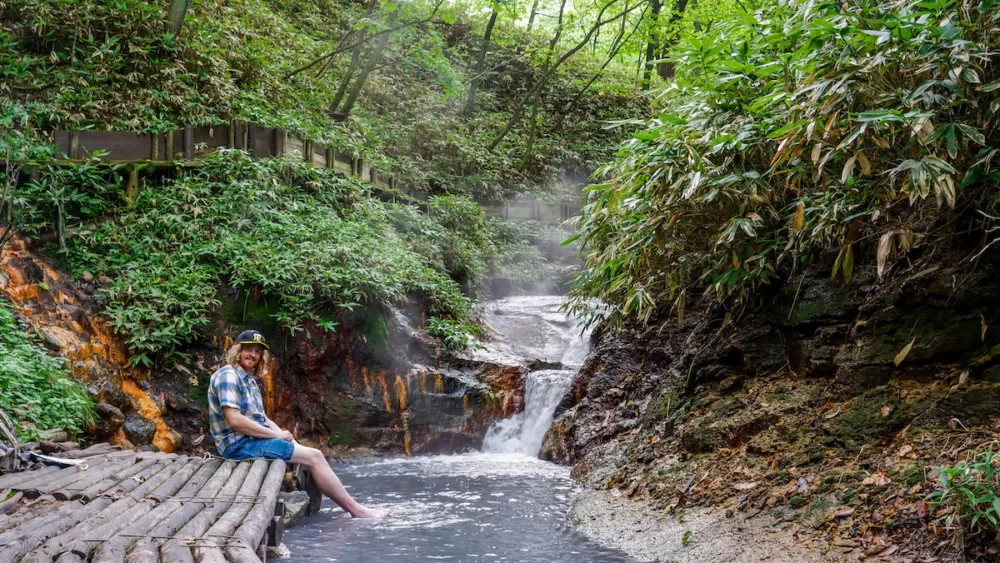
The water is hot, but we quite enjoyed the temperature and found it pleasant. We went early in the morning and there was hardly anyone there, so we lingered a good half hour before we continued on our walk.
The area is nicely set up for visitors. You have bamboo seating all along the river’s edge plus there are little padded mats that you can use free of charge so that you’re comfortable and don’t get your clothes wet.
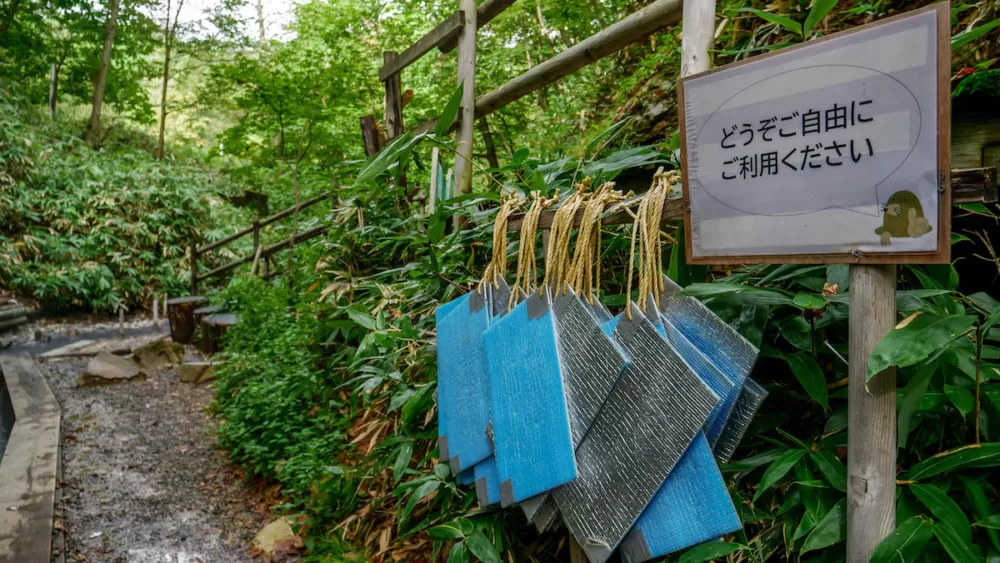

It’s a beautiful green walk to the footbath along a well-marked trail, and from there you can continue on your hike to Oyunuma Pond and the rest of Hell Valley.
TIP: Bring a small towel from your ryokan or hotel so that you can dry your feet. You can wear sandals to reach the footbath, but if you plan to spend the day hiking in Hell Valley, you’ll want comfortable shoes.
Hell Valley or Jigokudani
The main attraction in Noboribetsu Onsen is Jigokudani also known as Hell Valley, which is part of Shikotsu Toya National Park.
Jigokudani is home to a volcanic area with dramatic landscapes that showcase the raw power of nature complete with bubbling lagoons and plumes of steam that rise from the Earth. This is also the main source of Noboribetsu’s hot spring waters.
Visitors can explore Hell Valley via a network of hiking trails and boardwalks that weave their way through this landscape.
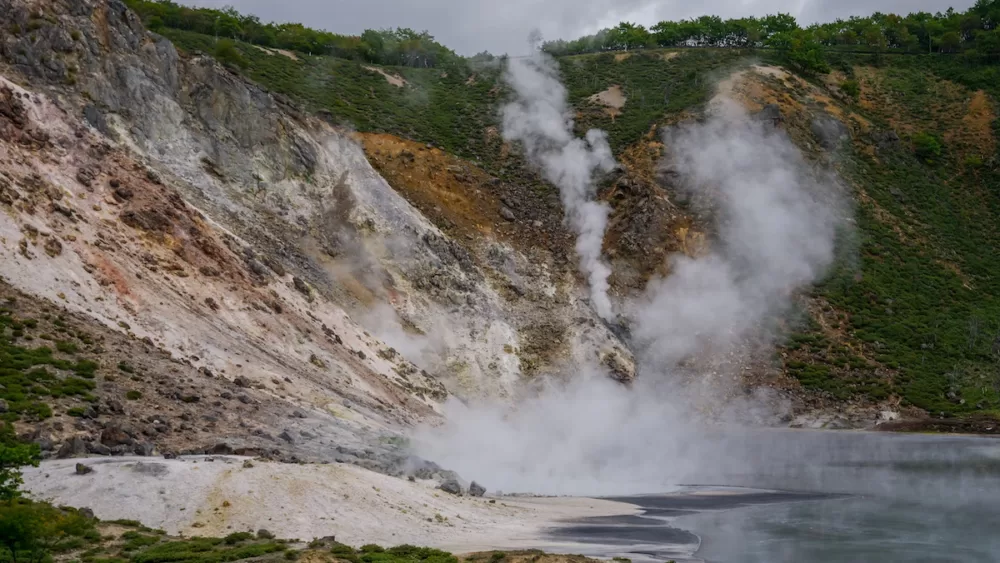
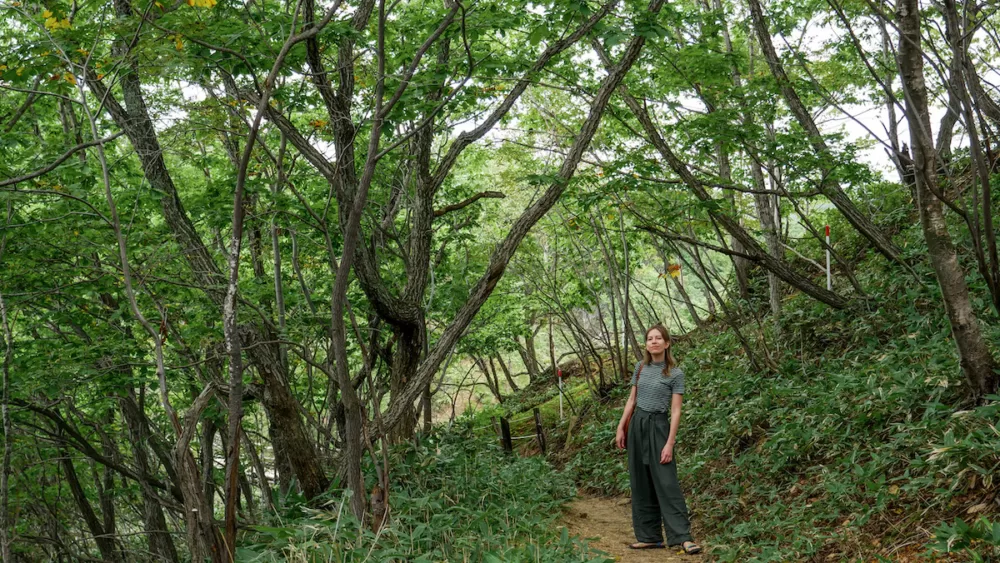
Some of the highlights along the way include the above-mentioned Oyunuma River Natural Footbath, Oyunuma Pond, Okunoyu Pond, and the various trails and boardwalks that lead to observation decks across Hell Valley.
We were also pleasantly surprised to spot several Japanese Sika deer while hiking through Hell Valley, mainly around Oyunuma Pond and Okunoyu Pond.
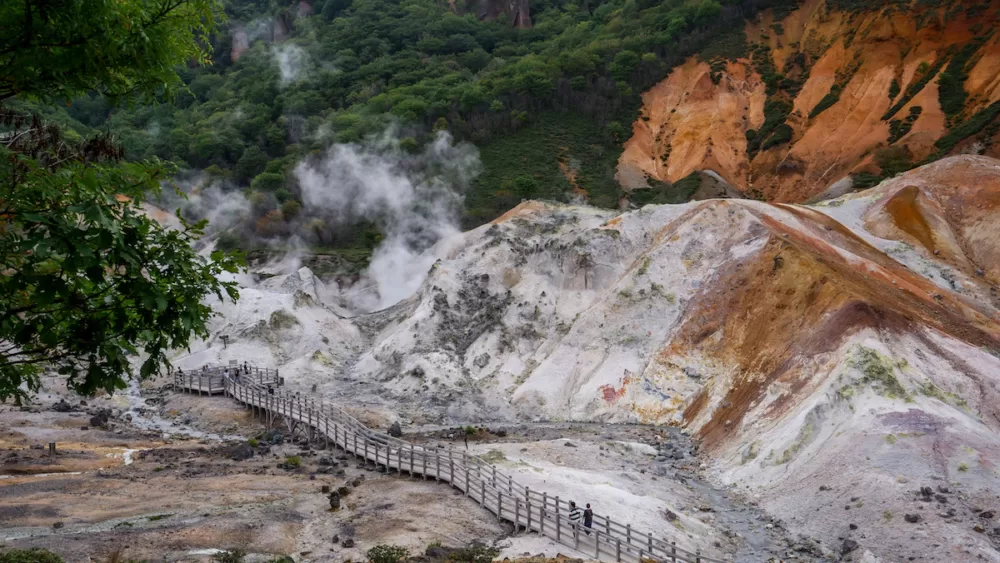
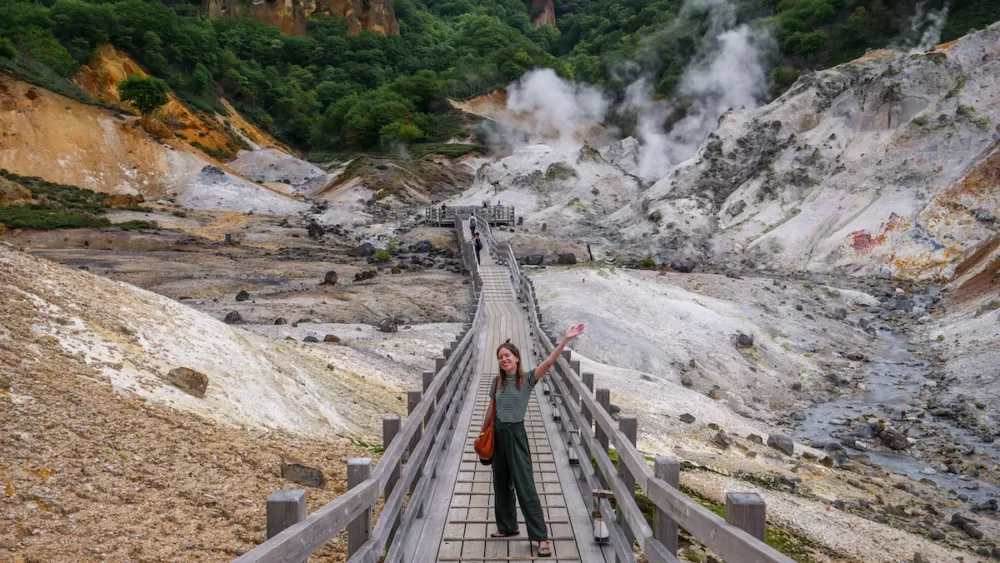
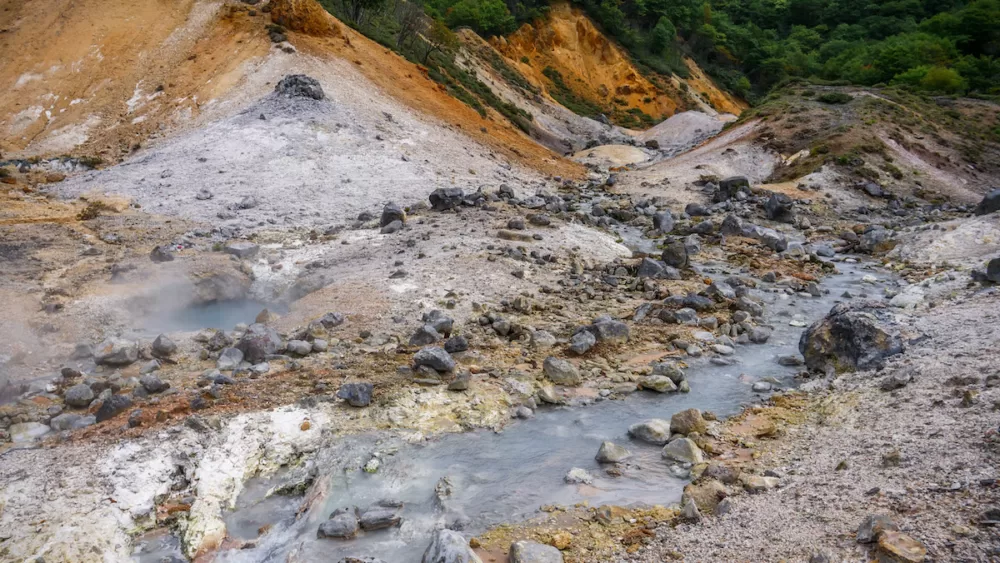
The landscape really is otherworldly, or perhaps underworldly, with its bleached rocks, steam vents, and bubbling pools, not to mention the sulfuric odour that wafts through the air.
But seriously, take the time to walk the trails and explore the area because the landscape is constantly changing and there is so much diversity even in the colour of the soil. At every turn, it felt like we had stumbled upon another painting.
TIP: Bring water, wear sunscreen and a sun hat, and opt for hiking boots or comfortable walking shoes. The distances are relatively short (you can do the whole loop in half a day), but there are stairs and you’ll be hiking up and down so you want to be safe and comfortable.
Geyser in Sengen Park
You’ll probably hear this attraction before you see it. So if you’re walking through Noboribetsu Onsen Town and you hear a rumbling sound emanating from Sengen Park, follow your ears because it will lead you to a geyser.
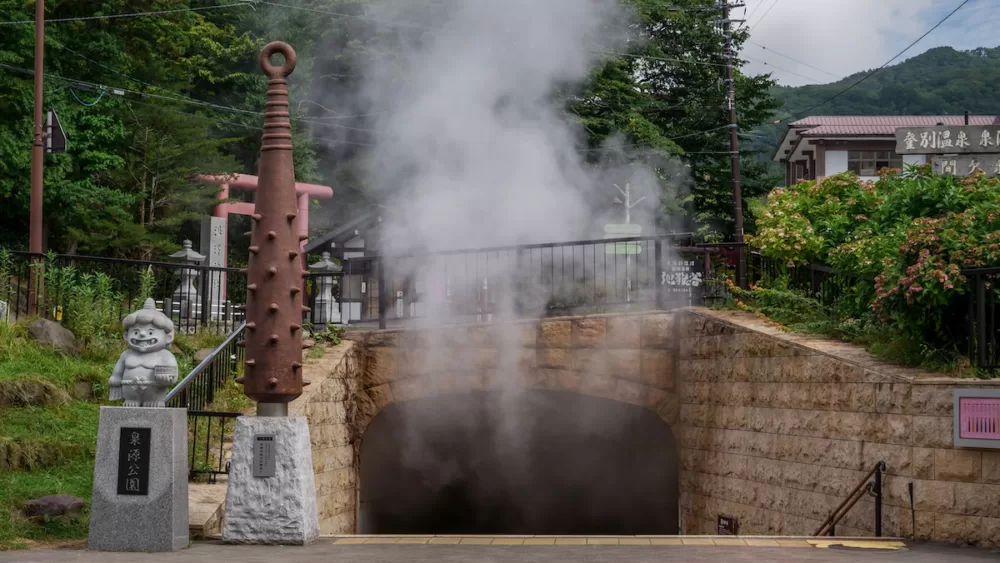
Roughly every three hours, this geyser turns into a bit of a cauldron unleashing water and a billowing cloud of steam. The water comes from the hot springs that flow in Hell Valley and the eruption lasts approximately 50 minutes.
Sengen Park was built around this geyser to commemorate Noboribetsu’s 150 years as a hot spring bathing town. The park is also surrounded by the “Nine Clubs of the Hot Spring Ogres” which were added to the park on the occasion of its 50th Hell Festival.
Yuzawa Shrine
Another attraction to visit in Noboribetsu Onsen is the Yuzawa Shrine. This shrine is located in the centre of town just across from Sengen Park and can be accessed via a steep stone staircase directly behind a Tori gate.
You’ll notice two creatures of the underworld guarding the shrine just to the right of the staircase: a standing red ogre and a seated blue ogre, both holding clubs in their hands.
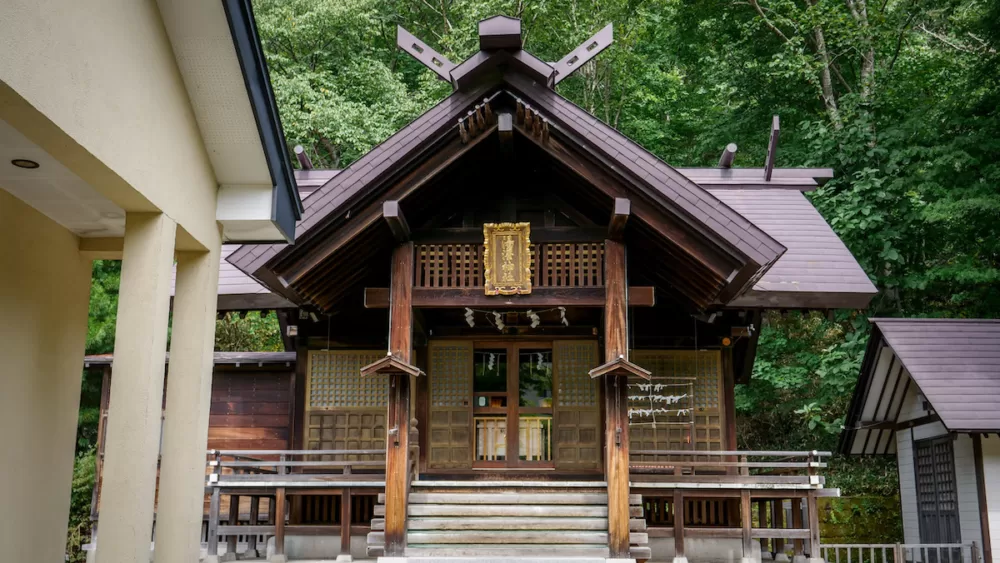
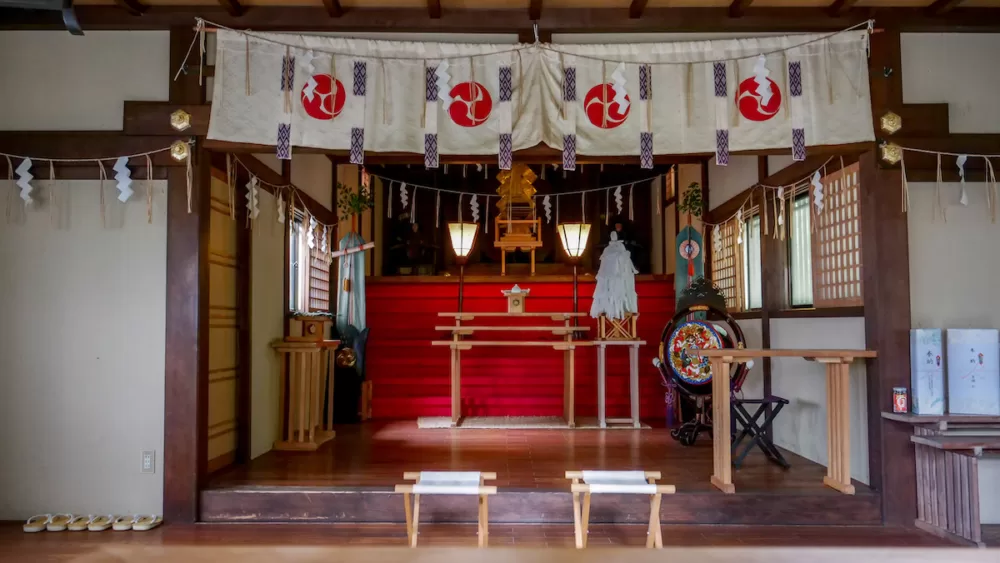
This shrine is a nice little escape from the onsen town below. Very few people seem to climb up – at least that’s what we noticed during our visit! – so you may just get the whole place to yourself. We think it’s worth a visit if you’re already in the area.
Speaking of Yuzawa, there’s a town by the same name in Niigata Prefecture that we also visited, so if your travels are taking you that way, check out this blog post highlighting some of the best things to do in Yuzawa.
Enmado Temple
Noboribetsu is full of unusual attractions and Enmado Temple is one of them. This temple pays homage to Enma Daio or King Enma, the ruler of hell and overlord of ogres in Japanese folklore.
In the temple, you’ll find an enshrined animatronic puppet that ‘wakes up’ at select times throughout the day and transforms into a creature of the underworld. A drumming sound rings through the temple and then King Enma’s face begins to turn red, his brows become upturned giving him an evil appearance, and his smile develops fangs.
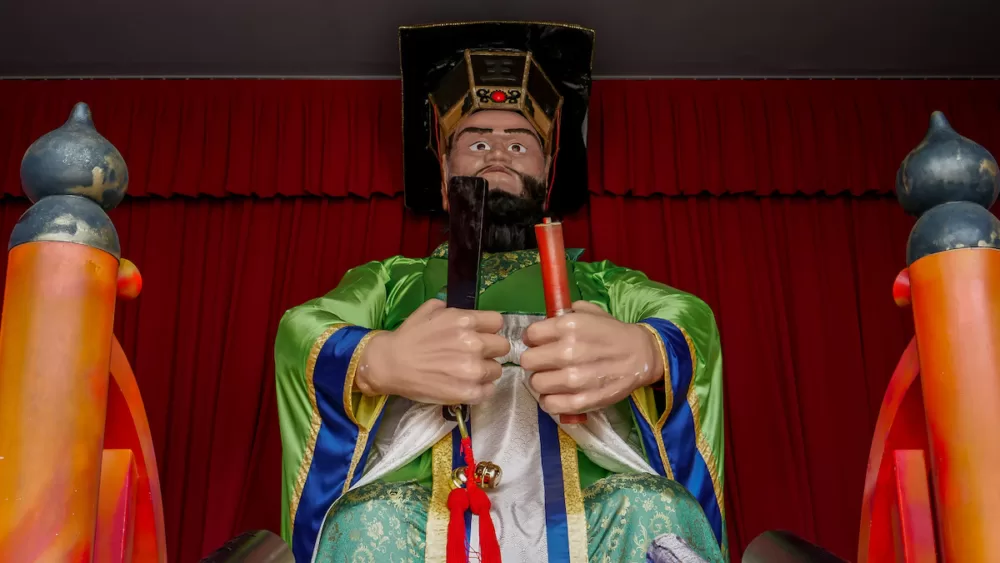
During Noboribetsu’s Hell Festival in August, the statue of King Enma is paraded through the streets. But if you miss the festival, you can watch the free performance right at Enmado Temple.
The schedule is posted in front of Enmado Temple. At the time of our visit, it was 10:00, 11:00, 13:00, 15:00, 17:00 and 21:00.
Eat spicy ramen
For the best ramen of your life, you need to eat at 閻魔軒. No, the restaurant doesn’t have an English name, but you can paste this name into Google Maps and you’ll be able to find it.
It’s located about one block south of Enmado. The building is painted a deep teal colour on the exterior and you’ll notice some red flags at the entrance. Their menu is posted right next to the door, so you’ll be able to confirm you’re at the right place.
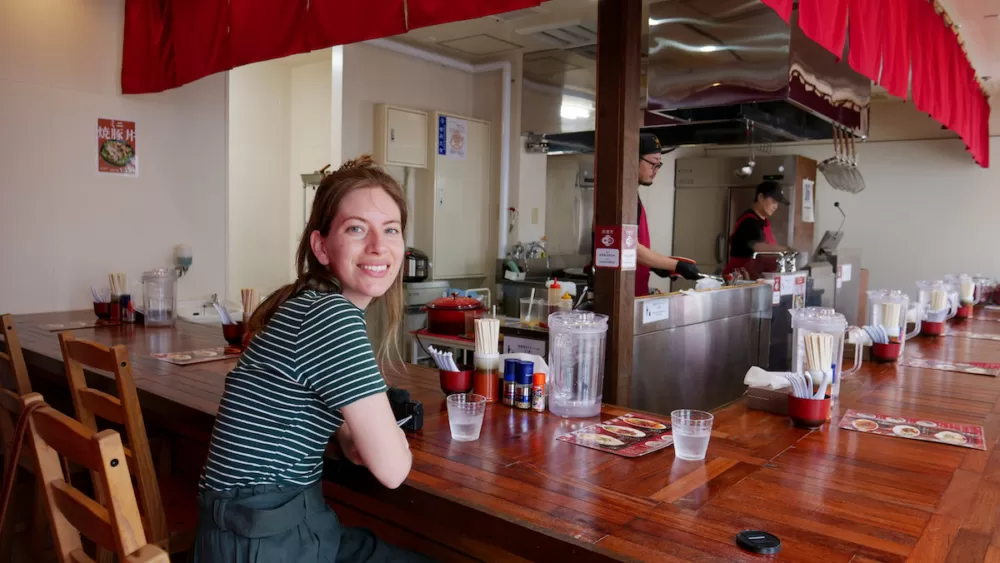
The menu here is super limited, but that’s a sign of a good restaurant because the few ramen dishes they serve are outstanding. I would go as far as saying this was the best ramen we had throughout our 6-week trip across Japan!
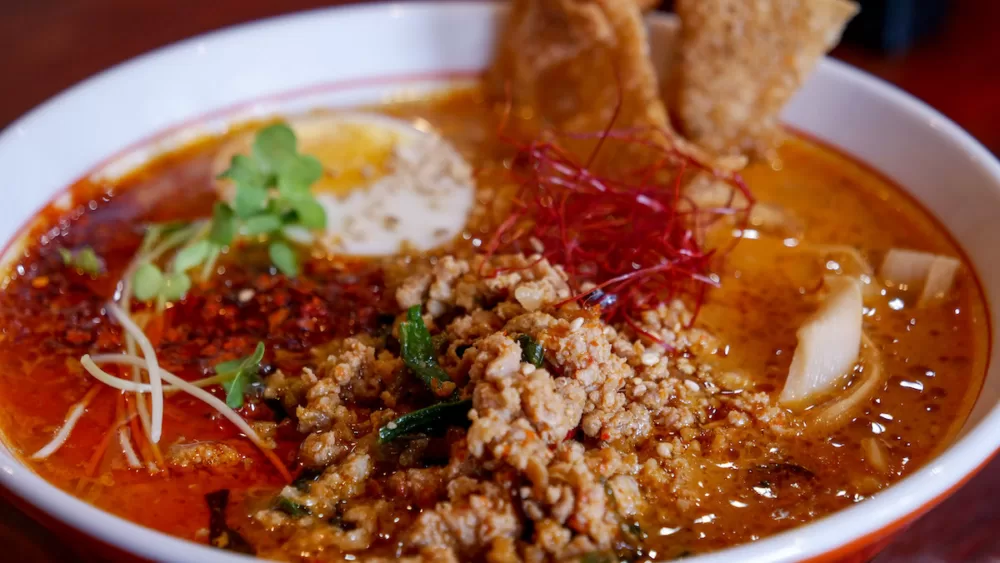
Their signature dish is the Enma Ramen or ‘Hell Ramen’, a bowl of spicy ramen noodles which can also be served as Dan Dan Ramen if you prefer to have it without the broth. The dish was fiery, fragrant and delicious to the very last bite.
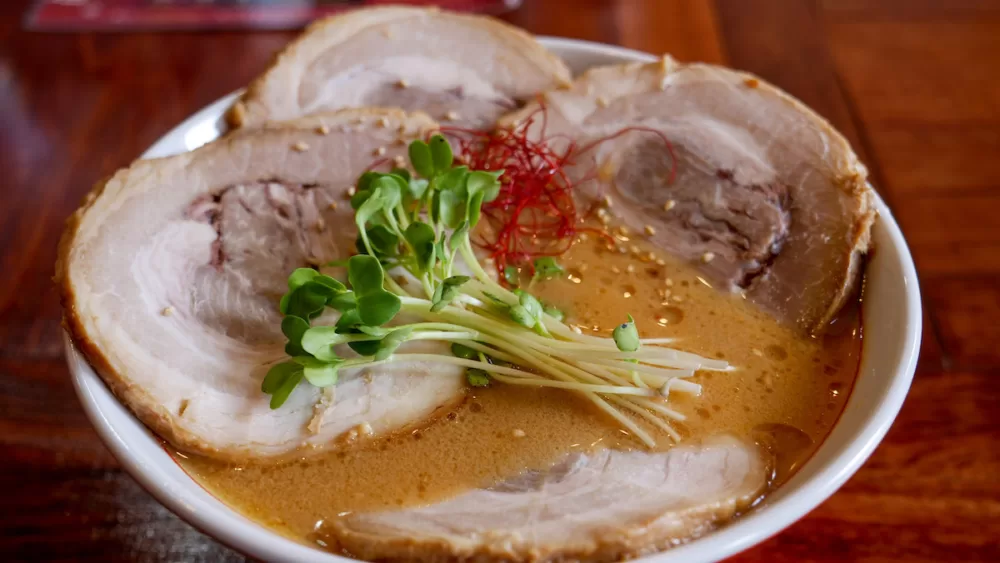
If you prefer to stay away from the spicy ramen, you can order the Chashao ramen which is topped with slices of slow-braised pork.
You can also order a classic bowl of ramen and choose between their three different broths: shoyo (soy sauce), shiyo (clear chicken broth) and miso.
TIP: This is a small restaurant with an open kitchen that only seats a small number of guests, so if you don’t want to wait, it’s a good idea to arrive before the lunch crowd.
Noboribetsu Date Jidai Village
One attraction in Noboribetsu that we just didn’t have enough time for but is worth mentioning is Noboribetsu Date Jidai Village.
This is an Edo-period theme park where you can walk around and relive what that time would have been like. You can stroll the ancient roads lined with merchant shops, see majestic samurai residences, and even go inside ninja houses.
And not only that, but you can also meet people playing characters from that time: ninjas, samurais, and oirans (courtesans).
There are also performances that take place at set times throughout the day. You can watch a ninja show at the Kasumi Ninja House, an oiran show at the Japanese Culture Theater, a Nyanmage Comedy at the O-Edo Theater, or an outdoor action show at the Open-air Theater Ninja Fort.
You can get a 1-Day Pass for Noboribetsu Date Jidaimura here.
Attending Noboribetsu Jigoku Matsuri
The Noboribetsu Jigoku Matsuri or Hell Festival takes place the last week of August.
This local festival is based on the legend that on the last Saturday and Sunday of August, the gateway to hell opens and King Enma, ruler of the underworld, emerges to visit Noboribetsu Onsen accompanied by his demons.
During this festival, King Enma is taken out of the temple and paraded through town, there is a taiko drumming performance, and dancers dressed as demons take on the town’s streets.
We missed this festival by just a couple of weeks, though to be fair, we didn’t even know this celebration existed until we arrived in Noboribetsu!
Watching the Demon Fireworks
If you miss the Hell Festival, you still have some opportunities to experience the festivities in Noboribetsu Onsen.
Held during the summer months from early June to late July, you can attend the Jigokudani Demon Fireworks or Onihanabi. This is a firework display that takes place a few nights per week (it’s not daily!) starting at 8:30 pm and lasting for about half an hour. Check the fireworks schedule here.
During the show, locals dress up as yukijin who are considered the demon guardians of the hot springs. They dance around shooting hand-held fireworks that blast up to 8 meters into the air.
There are six demons that launch 24 fireworks per day while three other demons beat the drums.
TIP: It’s recommended you arrive about half an hour early if you want to watch the fireworks on the steps overlooking Hell Valley. However, it’s also important to note that no open-toed shoes are allowed in this section.
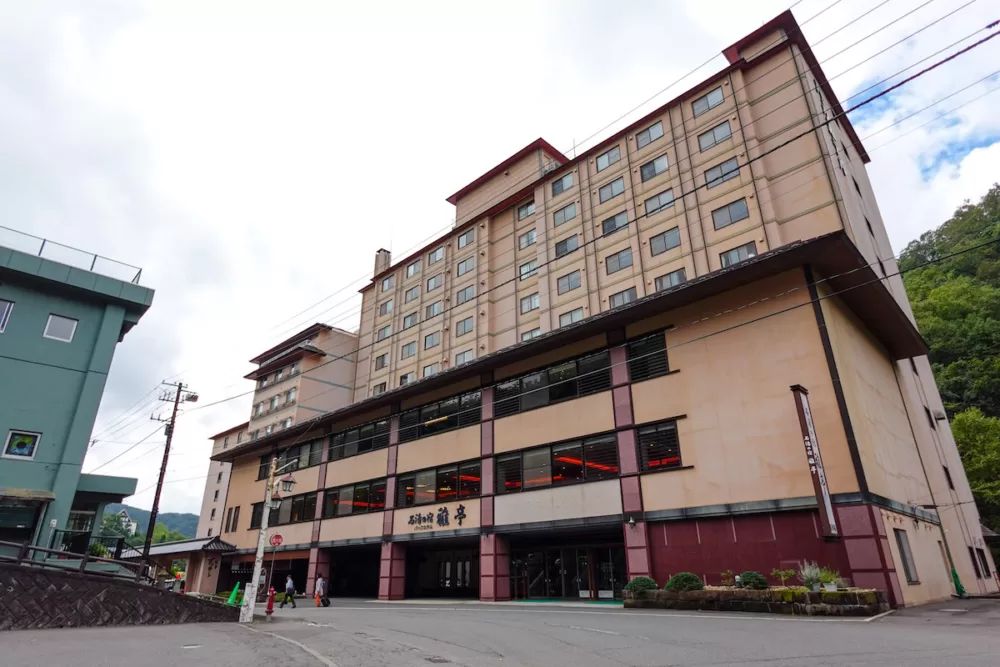
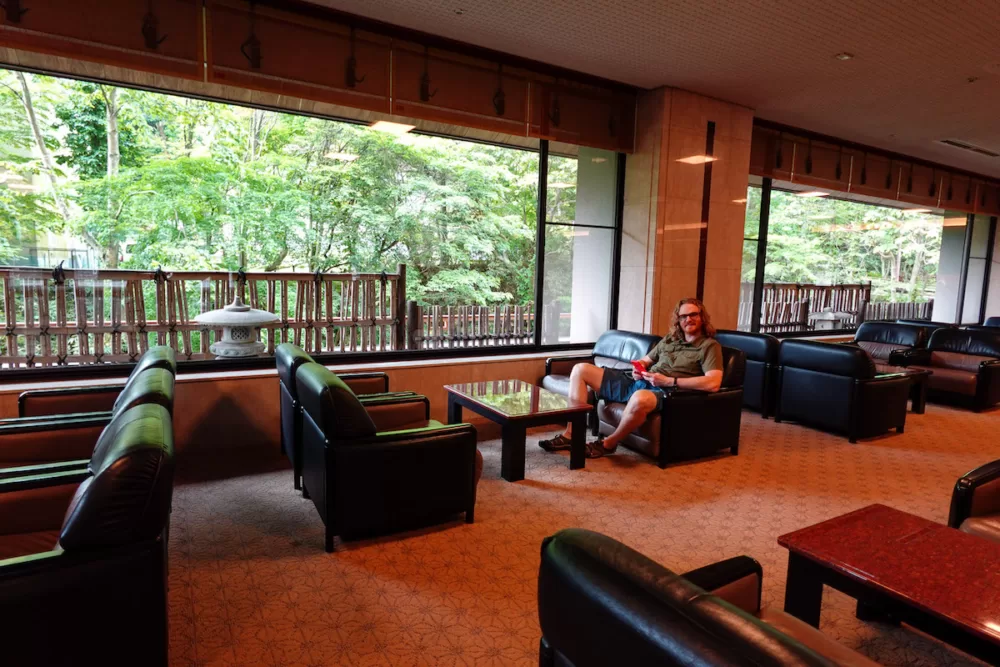
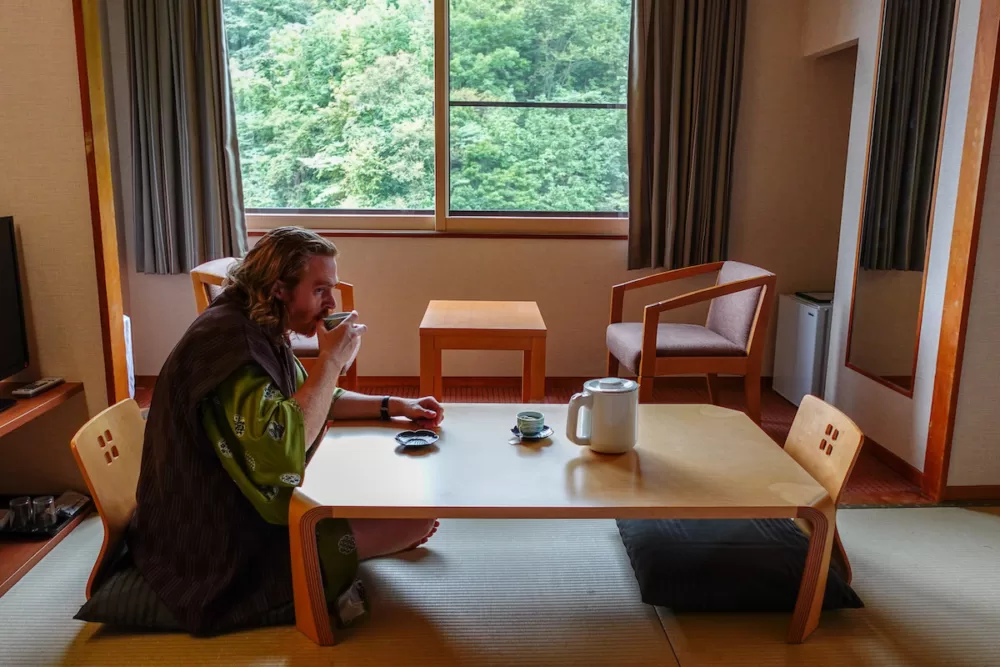
Where to stay in Noboribetsu Onsen
Noboribetsu is an onsen town and as such there are lots of ryokans to choose from. A ryokan is a traditional Japanese guesthouse that offers a unique cultural experience.
Some unique aspects of a ryokan include having an onsen (communal baths and hot springs), traditional rooms with tatami floors where you sleep on a futon on the ground, and a kaiseki dinner which is an elaborate multi-course dining experience.
We stayed at Park Hotel Miyabitei which was a modern take on a ryokan. This is quite a large hotel where you can choose between traditional Japanese rooms and Western-style rooms.
What sold us was their massive onsen which features multiple indoor and outdoor sulfur pools that treat different ailments. We went to the onsen in the early mornings and in the evenings during dinner time and we found that we often had the entire onsen to ourselves or only had to share with a handful of people. There’s a tip if you’re feeling shy about your first onsen experience in Japan: go during off-peak hours!
The one aspect of our hotel that was different from other ryokan stays is that at this hotel meals were buffet style. There was no kaiseki dinner, but rather an all-you-can-eat buffet in the dining hall. The buffet had snow crab (which everyone flocked to!), plus fresh tuna and salmon sashimi. Plus, lots of hot dishes featuring a mix of Western and Japanese foods.
If this sounds like your kind of place, you can read reviews of Park Hotel Miyabitei here.
